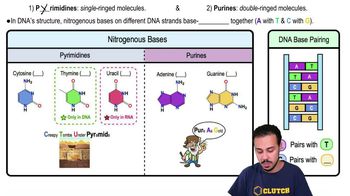Here are the essential concepts you must grasp in order to answer the question correctly.
Photosynthesis
Photosynthesis is the process by which certain organisms, including plants and photosynthetic bacteria, convert light energy into chemical energy, specifically glucose, using carbon dioxide and water. This process involves chlorophyll and occurs in two main stages: the light-dependent reactions and the Calvin cycle. Understanding photosynthesis is crucial for identifying organisms that can produce their own food and contribute to the ecosystem.
Recommended video:
Pigments of Photosynthesis
Nitrogen Fixation
Nitrogen fixation is the conversion of atmospheric nitrogen (N2) into a form that organisms can use, such as ammonia (NH3). This process is essential for the synthesis of amino acids and nucleotides, which are vital for life. Certain bacteria, including some photosynthetic species, possess the ability to fix nitrogen, making them important for soil fertility and plant growth.
Recommended video:
Cyanobacteria
Cyanobacteria, often referred to as blue-green algae, are a group of photosynthetic bacteria that can perform both photosynthesis and nitrogen fixation. They play a significant role in aquatic ecosystems and are known for their ability to produce oxygen as a byproduct of photosynthesis. Their dual capability makes them unique among bacteria and essential for nutrient cycling in various environments.
Recommended video:
 Verified step by step guidance
Verified step by step guidance Verified video answer for a similar problem:
Verified video answer for a similar problem:



 2:42m
2:42m